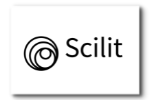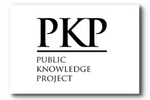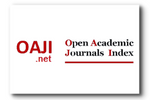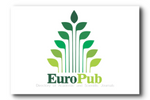Evaluation of the Antifungal Activity of Lyophilized Tectona grandis Leaf Extract Against Phytopathogenic Fungi
DOI:
https://doi.org/10.55892/jrg.v8i18.2055Keywords:
actividad antifúngica, Tectona grandis, hongos fitopatógenos, metabolitos bioactivosAbstract
This study evaluates the antifungal activity of the freeze-dried extract of Tectona grandis leaves against three phytopathogenic fungi, Aspergillus oryzae, Rhizopus stolonifer, and Aspergillus niger. A phytochemical screening revealed that the aqueous extract held the highest diversity of bioactive metabolites, including saponins, flavonoids, and alkaloids. In the experiment under controlled conditions, the effect of different concentrations of the aqueous extract on fungal growth was measured, with concentrations varying between 30 and 75 mg/ml. The results showed that Rhizopus stolonifer was the most affected at low doses, while Aspergillus niger exhibited notable growth at concentrations of 36.3 mg/ml and 52.5 mg/ml. The analysis of variance (ANOVA) of the cubic model showed that all model terms, including dose and the interaction between dose and fungus type, were significant (p < 0.0001). Additionally, the cubic model proved an adjusted R² of 0.9983, suggesting an excellent fit to the observed data. These findings suggest that Tectona grandis extract has significant potential as an antifungal agent, varying in effectiveness depending on the fungus type and concentration used, which could be useful in developing biological control strategies in crops.
Downloads
References
Adeniyi, S., Orjiekwe, C., Ehiagbonare, J., & Arimah, B. (2012). Evaluation of chemical composition of the leaves of Ocimum gratissimum and Vernonia amygdalina. International Journal of Biological and Chemical Sciences, 6(3), 1316-1323. doi:10.4314/ijbcs.v6i3.34
Bruneton, J. (2013). Pharmacognosy, phytochemistry, medicinal plants. ed 2. Obtenido de https://www.cabidigitallibrary.org/doi/full/10.5555/19940303123
Burt, S. (2004). Essential oils: their antibacterial properties and potential applications in foods—a review. International Journal of Food Microbiology, 94(3), 223-253. doi:https://doi.org/10.1016/j.ijfoodmicro.2004.03.022
Brown, D., & Pandey, C. (2000). FAO.org. Recuperado de https://www.fao.org/3/x4565e/x4565e03.htm#TopOfPage
Chávez-Salgado, L., Vandenbossche, V., & Vilarem, G. (2022). Tectona grandis Linn. f. secondary metabolites and their bioactive potential: a review. iForest - Biogeosciences and Forestry, 15(2), 112–120. https://doi.org/10.3832/ifor3714-015
Cortés-Rivera, H. J., González-Estrada, R. R., Huerta-Ocampo, J. Á., Blancas-Benítez, F. J., & Gutiérrez-Martínez, P. (2021). Evaluación de quitosano comercial y extractos acuosos de mesocarpio de coco (Cocos nucifera L.) para el control de Rhizopus stolonifer aislado de guanábana (Annona muricata L.): Pruebas in vitro. TIP Revista Especializada en Ciencias Químico-Biológicas, 24, 1-11. https://doi.org/10.22201/fesz.23958723e.2021.0.293
Dahua Gualinga, R. D., Rivera Barreto, J. L., Rodríguez Almeida, N. N., & Sancho Aguilera, D. (2024). Actividad antimicrobiana, antifúngica y tamizaje fitoquímico de Simira cordifolia. Gaea Ciencia Contemporánea, 5(1). https://doi.org/10.55813/gaea/ccri/v5/n1/382
Dean, A., & Bos, D. (2010). Fractional Factorial Experiments:Design and Analysis of Experiments . New york : Springer Texts in Statistics ((STS)). doi:https://doi.org/10.1007/0-387-22634-6_15
Edeoga, H., Okwu, D., & Mbaebie, B. (2005). Phytochemical constituents of some Nigerian medicinal plants. African Journal of Biotechnology, 4(7), 685-688. doi:10.5897/AJB2005.000-3127
Flores Jeimy, B., Trugilho Paulo, F., Lima José, T., Gherardi Paulo, R., & Moreira José, R. (2014). Caracterización de la madera joven de Tectona grandis L. F. plantada en Brasil. Madera y Bosques, 20(1), 11-20. https://doi.org/10.21829/myb.2014.201172
Frisvad, J. C., Møller, L. L. H., Larsen, T. O., Kumar, R., & Arnau, J. (2018). Safety of the fungal workhorses of industrial biotechnology: Update on the mycotoxin and secondary metabolite potential of Aspergillus niger, Aspergillus oryzae, and Trichoderma reesei. Applied Microbiology and Biotechnology, 102(22), 9481-9515. https://doi.org/10.1007/s00253-018-9354-1
García-Conde, K. B., Cerna-Chávez, E., Ochoa-Fuentes, Y. M., & Velázquez-Guerrero, J. J. (2024). Aspergillus oryzae: Una oportunidad para la agricultura. Revista Mexicana de Fitopatología, 42(1), 1. https://doi.org/10.18781/R.MEX.FIT.2302-2
García, J., Rodríguez, M., Hernández, L., & Vargas, C. (2023). Estandarización de técnicas para el tamizaje fitoquímico de plantas medicinales. . Revista de Farmacología y Terapéutica, 15(2),, 2, 45-59.
Ghazal, E., Higgins -Keppler, A., Scott, D., & Heather, B. (2020). Inhibition of Fungal Growth and Induction of a Novel Volatilome in Response to Chromobacterium vaccinii Volatile Organic Compounds. Pub Med, 20(11), 1035. doi: 10.3389/fmicb.2020.01035
Guerrero-Rodríguez, E., Solís-Gaona, S., Hernández-Castillo, F. D., Flores-Olivas, A., Sandoval-López, V., & Jasso-Cantú, D. (2007). Actividad biológica in vitro de extractos de Flourensia cernua D.C. en patógenos de postcosecha: Alternaria alternata (Fr..) Keissl., Colletotrichum gloeosporioides (Penz.) Penz. y Sacc. y Penicillium digitatum (Pers..) Sacc. Revista Mexicana de Fitopatología, 25(1). https://www.scielo.org.mx/scielo.php?pid=S0185-33092007000100007&script=sci_arttext
Havsteen, B. (2012). Havsteen, B. H. (2002). The biochemistry and medical significance of the flavonoids. Pharmacology & therapeutics, 96(2-3), 67-202. Pharmacology & therapeutics., 96(2-3), 67-202. doi:https://doi.org/10.1016/S0163-7258(02)00298-X
Horecker, B. (2017). The biochemistry of sugars. Pub Med, 15(1), 1-21. Obtenido de https://pubmed.ncbi.nlm.nih.gov/182650/
HuangBoxin, D., Ou, B., & Prior, R. (2005). The Chemistry behind Antioxidant Capacity Assays. Journal of Agricultural and Food Chemistry, 53(6), 1841-1856. doi:https://doi.org/10.1021/jf030723c
Irinmwinuwa, E., Cherechi, N., Oyate, G., Ifeyinwa, O., Chinedu, J., & Iganga, A. (2023). A comprehensive review of phytochemistry and antibacterial action of Tectona grandis. International Journal of Science and Research Archive, 9(2), 133-143. doi:https://doi.org/10.30574/ijsra.2023.9.2.0527
Jácome, J. (2014). Validación de métodos analíticos para la determinación de la demanda química de oxígeno (rango bajo, rango medio, rango alto), sólidos totales disueltos y sólidos totales suspendidos en matrices de agua clara y residual en el Centro de Investigaciones y Control Ambiental [Tesis de grado, Universidad Técnica de Ambato]. http://repositorio.uta.edu.ec/handle/123456789/8461
Khan, M. I., & Ullah, N. (2021). Bioactive Compounds in Medicinal Plants and Their Role in Metabolic Disorders. Molecules, 26(4), 1001. https://doi.org/10.3390/molecules26041001
Khera, N., & Bhargava, S. (2013). Phytochemical and Pharmacological Evaluation of Tectona grandis. International Journal of Pharmacy and Pharmaceutical Sciences, 5(3), 923-927. https://bit.ly/47UXan0
Kouassi, E. K., Coulibaly, I., M’boh, G. M., Ouattara, S., Koffi, M. K. A., Oniga, I., & Allico, J. D. (2016). Comparison of antiaspergillar activity of extracts of Tectona grandis Linn according to two antifungal susceptibility testing. The Journal of Phytopharmacology, 5(3), 93–99. https://doi.org/10.31254/phyto.2016.5301
Lin, D., Xiao, M., Zhao, J., Li, Z., Xing, B., Li, X., Kong, M., Li, L., Zhang, Q., Liu, Y., Chen, H., Qin, W., & Wu, H. (2016). Overview of plant phenolic compounds and their importance in human nutrition and type 2 diabetes treatment. Molecules, 21(10), 1374. https://doi.org/10.3390/molecules21101374
Luna-Fox, S. B., Uvidia-Armijo, J. H., & Rivera-Barreto, J. L. (2024). Kinetic study of solid-liquid extraction of caffeine in Ilex guayusa Loes. Revista de la Facultad de Agronomía de la Universidad del Zulia, 41(3), e244128. https://doi.org/10.47280/RevFacAgron(LUZ).v41.n3.08
Makhuvele, R., Naidu, K., Gbashi, S., Thipe, V., & Adebo. (2024). The use of plant extracts and their phytochemicals for control of toxigenic fungi and mycotoxins. Trend and inmunology, 45(10), 15-848. Obtenido de https://www.cell.com/trends/immunology/current?utm_campaign=STMJ_1728563399_CP_ALT&utm_medium=BAN&utm_source=WEB&dgcid=STMJ_1728563399_CP_ALT
Mäkelä, P., & Kallio, H. (2020). Amino Acids: Importance and Analysis. Journal of Agricultural and Food Chemistry, 68(35), 9463-9475. https://doi.org/10.1021/acs.jafc.0c03654
Monsalve, M., & Alarcón, A. (2019). Redalyc.org. Recuperado de https://www.redalyc.org/journal/5826/582661898006/html/
Monsalve Meribary, P., & Bello Adonis, A. (2020). Evaluación antimicrobiana de extractos obtenidos de los residuos de la corteza de Teca (Tectona grandis L.F). UNEMI, 13(32), 63-68. https://www.redalyc.org/articulo.oa?id=582661898006
Nayeem, N., & Karvekar, M. (2010). Comparative phytochemical and pharmacological screening of the methanolic extracts of the frontal and mature leaves of Tectona grandis. International Journal of Pharma and Bio Sciences, 1(3), 1-7. Obtenido de https://d1wqtxts1xzle7.cloudfront.net/41833068/ANTIOXIDANT_AND_CYTOTOXIC_ACTIVITIES_OF_20160131-7671-1uznr9p-libre.pdf?1454308888=&response-content-disposition=inline%3B+filename%3DANTIOXIDANT_AND_CYTOTOXIC_ACTIVITIES_OF.pdf&Expires=1730300053&Signature=Q
Nayeem, N., & Karvekar, M. (2015). Comparative phytochemical and pharmacological screening of the methanolic extracts of the frontal and mature leaves of Tectona grandis. International Journal of Pharma and Bio Sciences, 1(3), 1-7. Obtenido de https://citeseerx.ist.psu.edu/document?repid=rep1&type=pdf&doi=5530b34665126ee979d82f540481ec92e00bf233
Neha, K., & Sangeeta, B. (2013). Phytochemical and pharmacological evaluation of Tectona Grandis.Linn. International Journal of Pharmacy and Pharmaceutical Sciences, 5, 923–927
Nijveldt, R., Nood, E., Hoorn, D., Boelens, P., Norren, K., & Van, P. (2001). Flavonoids: a review of probable mechanisms of action and potential applications. The American Journal of Clinical Nutrition, 74(4), 418-425. doi: https://doi.org/10.1093/ajcn/74.4.418
Nidavani, R. B., & Am, M. (2014). Teak (Tectona grandis Linn.): A renowned timber plant with potential medicinal values. International Journal of Pharmacy and Pharmaceutical Sciences, 6(1), 48–54.
Nwaeze, K., Ayola, G., Anyakora, C., Oparah, B., Chiedu, D., Shode, F., Smith, P. (2020). Phytochemical Screening, Antioxidant and Antiplasmodial Activities of methanol and n-hexane extracts from Stem Bark of Tectona grandis (Lamiaceae). Nigerian Journal of Pharmaceutical and Applied Science Research, 7(2), 67-74. Obtenido de https://nijophasr.net/index.php/nijophasr/article/view/221
Patel, R., & Patel, K. (2022). Comparative study of antifungal activity of natural extracts. Asian Journal of Pharmaceutical Research, 12(3), 100-107. doi: DOI: 10.22270/ajpr.v12i3.1234.
Philippe, D. (2021). Applications of predictive modeling techniques to fungal growth in foods. Current Opinion in Food Science, 38, 86-90. doi: 10.1016/j.cofs.2020.10.028
Pooja, V., Yadav, D. K., & Khandelwal, P. (2018). Tectona grandis (teak) - A review on its phytochemical and therapeutic potential. Natural Product Research, 33(16), 2338-2354. https://doi.org/10.1080/14786419.2018.1440217
Rachid, L., Said, E., Radouane, R., Kenfaoui, J., Esmaeel, Q., Hamss, H., . . . Barka, E. (2022). Biological Control of Plant Pathogens: A Global Perspective. Microorganisms, 10(3), 596. doi: https://doi.org/10.3390/microorganisms10030596
Ramesha, Bawa, K., & Ganeshaiah. (2006). The Teak Book: Ecology, Silviculture, Management and Utilization. India: International Book Distributors, p. 308.
Ramírez Juan, S. N. (2006). Liofilización de alimentos. ReCiTeIa. https://file:///C:/Users/Usuario/Downloads/2006Ramrez-Navas-LiofilizacionAlimentos%20(2).pdf
Rice-Evans, A., Miller, N., & Paganga, G. (2016). Structure-antioxidant activity relationships of flavonoids and phenolic acids. Free Radical Biology and Medicine, 20(7), 933-956. doi: https://doi.org/10.1016/0891-5849(95)02227-9
Rivero González, D., Cruz Triana, A., Martínez Coca, B., Ramírez Arrebato, M. Á., & Rodríguez Pedroso, A. T. (2009). Actividad antifúngica in vitro de la quitosana Sigma frente a hongos fitopatógenos causantes del manchado del grano en el cultivo de arroz (Oryza sativa L.). Fitosanidad, 13(2), 93-97. http://scielo.sld.cu/scielo.php?pid=S1562-30092009000200005&script=sci_arttext
Safari, N., Ardakani, H., Parroni, A., Becaccioli, M., & Reverberi, M. (2020). The Potential of Plant-Based Bioactive Compounds on Inhibition of Aflatoxin B1 Biosynthesis and Down-regulation of aflR, aflM and aflP Genes. Antibiotics, 9(11), 728. doi: https://doi.org/10.3390/antibiotics9110728
Sakamoto, Y. (2018). Influences of environmental factors on fruiting body induction, development and maturation in mushroom-forming fungi. Fungal biology reviews, 32(4), 236-248. doi: https://doi.org/10.1016/j.fbr.2018.02.003
Singh, S. N., Coordinator, A., Agarwal, A., & Moses, A. S. (2019). Antimicrobial activity of Tectona grandis against MDR enteric pathogens. ~ 1833 ~ Journal of Pharmacognosy and Phytochemistry, 8(5), 1833–1836. http://www.phytojournal.com
Terrones, G. (2013). Efecto antifúngico del extracto etanólico de frutos secos de Capsicum annuum var. annuum “pimentón” sobre el crecimiento de Alternaria solani, Fusarium oxysporum y Aspergillus niger. Sagasteguiana, 1(2), 31-40. https://www.scielo.org.mx/scielo.php?pid=S0185-33092007000100007&script=sci_arttext
Tharuka, W., & Baojun, X. (2023). Health-Promoting Effects of Bioactive Compounds from Plant Endophytic Fungi. Journal Fungi, 9(10), 997. doi:10.3390/jof9100997
Tocagon, W., et al. (2020). Proceso conservación alimentos por el método de liofilización [Trabajo de titulación, Universidad de Colombia]. Repositorio CUN. https://repositorio.cun.edu.co/handle/cun/1151.
Velázquez-del Valle, M. G., Bautista-Baños, S., Hernández-Lauzardo, A. N., Guerra-Sánchez, M. G., & Amora-Lazcano, E. (2008). Estrategias de control de Rhizopus stolonifer Ehrenb. (Ex Fr.) Lind, agente causal de pudriciones postcosecha en productos agrícolas. Revista Mexicana deFitopatología,26(1),22-33. https://www.scielo.org.mx/scielo.php?script=sci_arttext&pid=S0185-33092008000100003
Wallsgrove, R. (2010). Amino acids and their derivatives in higher plants. Cambridge University Press. https://doi.org/10.1017/CBO9780511527085
Wink, M. (2015). Alkaloids: Biochemistry, Ecology, and Medicinal Applications. Springer. https://doi.org/10.1007/978-3-319-15753-9











































